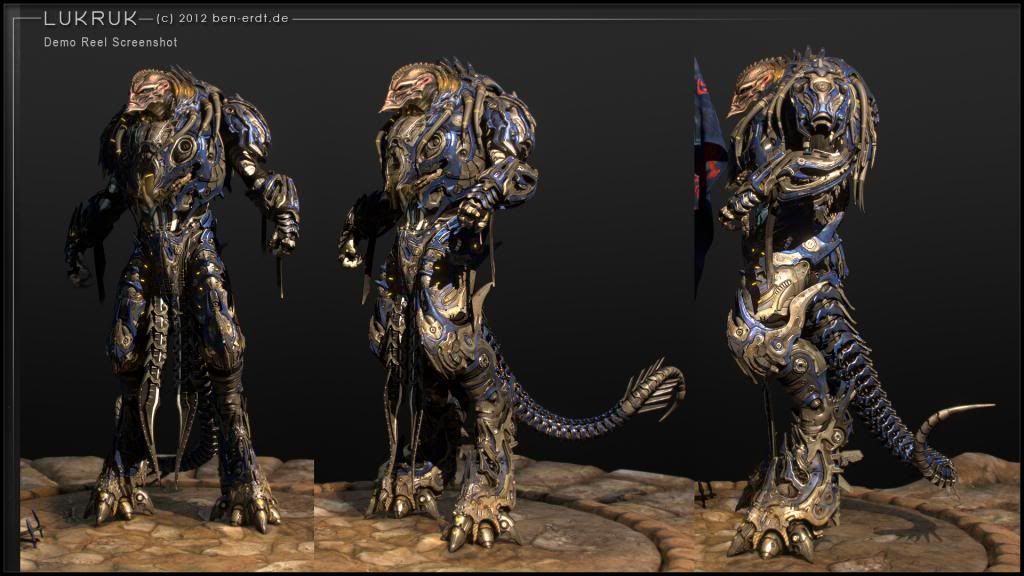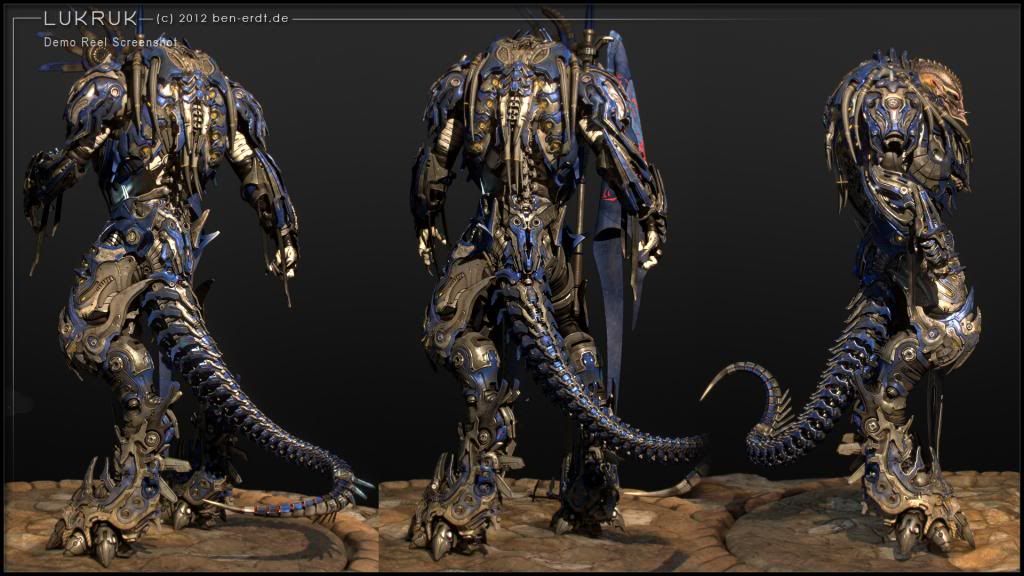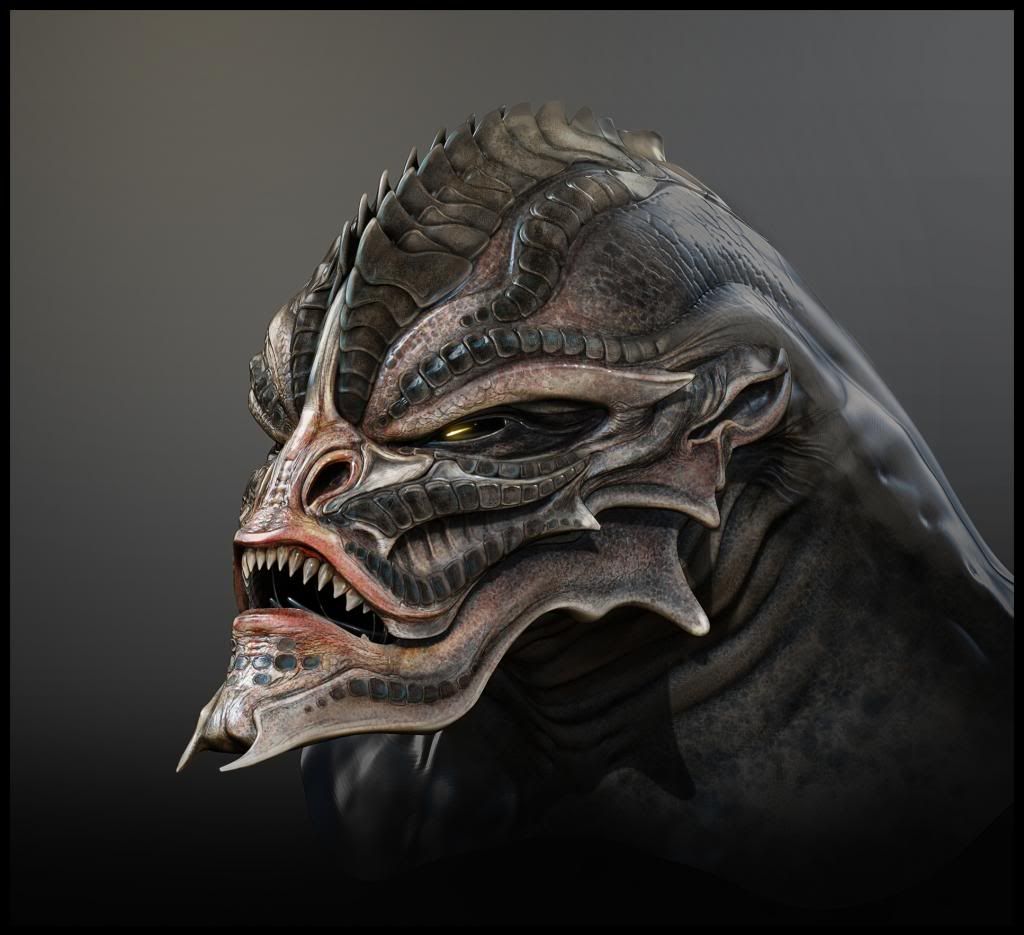Darth Narakada
The Ancient
Sorry about the dreadful formatting. Had to do this from my phone.



Name: Vidhvansaka
Designation: Sentient
Homeworld: Jivanada Dharaka
Language: Bhase and GSB
Average height of adults: 2.5m
Skin color: Ashen gray, tan, black, and dark blue.
Hair color: N/A
Atmosphere: Type 1
Strengths:
Average Lifespan: 760 years
Races:
Communication: Speaking and writing.
Culture: (Copied from planet sub for this species)
General behavior: Street Smart: the Vidvanhaska are more on the job learners than the traditional type of schooling found in most parts of the galaxy. Believing that one should learn from experience it is considered the correct way to learn in their species. Often families stick together and learn from the world around them, they prefer it this way and it's considered weak if a member of their race chooses a more traditional form of schooling and they are often looked down on.
Don't tread on me: Vidvanhaska are generally nice creatures, they treat each other with respect and they are kind creatures who often are peaceful. But where respect is given it is expected to be returned with the same amount. If you do not respect them back or at least pretend that you do bad things will happen. When dealing with them being polite and kind is your best option for they will extend the same courtesy to even the strangest of strangers.
Adventure!!: Born with a sense of adventure this species loves to traverse and search the stars among them often taking their families with them to learn from it. They are master linguists due to their brains and can understand and learn most languages fairly quickly. So it makes them perfect candidates to travel and move through the stars to find the adventure they so very much crave.
Other: Greetings are always formal and tend to be spiritually related. Farewells are the same. They walk with a slight bounce, due to their bowed legs that help them traverse the forests. They never pass up a meal and usually eat five per day.
History:
Intent: To provide a new playable species for use with a different roleplay style.



Name: Vidhvansaka
Designation: Sentient
Homeworld: Jivanada Dharaka
Language: Bhase and GSB
Average height of adults: 2.5m
Skin color: Ashen gray, tan, black, and dark blue.
Hair color: N/A
Atmosphere: Type 1
Strengths:
- Diplomatic: The Vihvansakan people are always attempting to find the most peaceful course of action.
- Fighters: Despite being diplomatic, their tri-split brain calculates movements and countermeasures at extreme speeds.Their brain essentially functions with three hemispheres and a complex three-way corpus collosum that allows the individual hemispheres to process certain bits of info, then send it through the corpus collosum to be furthered processed in the association areas. It increases the speed of the brain by limiting the amount of information processed by each individual hemispheres. In battle this allows them to calculate and respond to moves up to 1.8 times faster than most species, primarily humans. Also, their four triple jointed fingers have long length and gecko-like grip pads that allow them to almost never be disarmed.
- Arrogant: They have a tendency to bite off more than they can handle to show prowess to peers. Only the best make this attribute good.
- Large: They don't make good spies or recon squads. They're big and noisy.
Average Lifespan: 760 years
Races:
- Kalalkarahita: The untainted, composed of Old Teachings followers, the Vidhvansaka of this race have more pure, defined features and paler skin and scale colors.
- Dolaparita: The tainted ones, marked by darker skin and more regressed facial features.
Communication: Speaking and writing.
Culture: (Copied from planet sub for this species)
- Old Teachings: The old teachings or Haleya are the ancient ways of the Vidhvansaka. They celebrate three gods, a god of diplomacy and peace, a god of war and death, and a goddess of love and caring. The Old Teachings say that all life must be kept simple and nothing is to be wasted, this gave rise to the houses made of native woods and leaves. Though the buildings were made with primitive materials, the buildings they crafted were immensely intricate and were beautifully designed. The Old Teachings held nature in high regard and it was considered terrible luck to your family to defile or misuse nature. To clear your bad name from this, an Old Teachings Shaman has to put you through a ritual of cleansing and then would reach into your soul to extract the taintedness of your actions. If one lived a good life with the old teachings, when one died, one would go to the Endless Habbada - or feast. And there, one sat with all their loved ones, happily conversing with loved ones and new friends.
- New Teachings: New Teachings emphasize the honor and glorification of the gods, which are the same from the old teachings but still lack names. The New Teachings focus less on the simplicity of living and allow for more technology but many who practice this sect of religion still live in the intricate houses of nature.
- Radicals: The Radical section of the planet's populous can actually be divided into further subsects but in general these people are the ones who have broke off from most teachings and have embraced technology and finer living. Many people who are classified as radical are the immigrants to the planet, though it's not unheard of to have Vidhvansaka in this group.
- Other cultural norms: Shamans are the Vidhvansakan's name for Force users, which are rare among the peoples. If a shaman child is born, it is forced into breeding with other shaman or family lines of shaman. High shaman have extremely high levels of midi-clorian counts detectable by shaman. Four shaman must agree that someone is a high shaman for it to be valid. For government processes, a representative from a set of sectors, larger towns like Dari can have upwards of 60 sectors. Women Vidhvansakan are treated fairly and allowed presence in government for all decisions. A lot of art comes from those who follow the Old Teachings and depicts many abstract seems often telling stories of old. Children are always welcomed in many things as it's believed they bring life and a new, untainted minds. Food is often made extravagantly and almost always made from fresh ingredients. Military personnel are always volunteers that fight for pride and honor, they almost never have wives or other dependencies but despite that, the reproduction rates do not suffer. In traditional villages, all work is done without actual pay, but the denizens of the village are taken care of through a complex system of give and take.
General behavior: Street Smart: the Vidvanhaska are more on the job learners than the traditional type of schooling found in most parts of the galaxy. Believing that one should learn from experience it is considered the correct way to learn in their species. Often families stick together and learn from the world around them, they prefer it this way and it's considered weak if a member of their race chooses a more traditional form of schooling and they are often looked down on.
Don't tread on me: Vidvanhaska are generally nice creatures, they treat each other with respect and they are kind creatures who often are peaceful. But where respect is given it is expected to be returned with the same amount. If you do not respect them back or at least pretend that you do bad things will happen. When dealing with them being polite and kind is your best option for they will extend the same courtesy to even the strangest of strangers.
Adventure!!: Born with a sense of adventure this species loves to traverse and search the stars among them often taking their families with them to learn from it. They are master linguists due to their brains and can understand and learn most languages fairly quickly. So it makes them perfect candidates to travel and move through the stars to find the adventure they so very much crave.
Other: Greetings are always formal and tend to be spiritually related. Farewells are the same. They walk with a slight bounce, due to their bowed legs that help them traverse the forests. They never pass up a meal and usually eat five per day.
History:
- 4,300 BBY: First primitive forms of sentient life appear.
- 3,890 BBY: First primitive tools appear, very crudely fashioned
- 3,220 BBY: The Vidhvansakans are fully formed and functioning and Old Teachings begin to take hold.
- 2,960 BBY: Ten Year Darkness begins; After the destruction of much of the forest, shamans believe that ten years of bad luck and little prosperity is ahead.
- 2,950 BBY: The end of the TYD, celebratory day celebrated once every ten years becomes a tradition.
- 2,340 BBY: Rise of the New: New Teachings radicals begin to rise, defying ways of the Old Teachings.
- 2,280 BBY: War of Divergence: The tension between New and Old Teachings boils over and a civil war takes place ending with an agreement of separate living areas.
- 1,020: Major food shortage causes death toll and incest became necessary to keep the species alive, giving rise to a virus that developed for a short time.
- 1,340 BBY: Major metal deposits discovered, debates about who gets to use them and what for arise. No conclusion is reached.
- 1,040 BBY: Advanced farming techniques are developed.
- 600 BBY: First immigrants arrive and have difficulties with speaking to the natives.
- 580 BBY:The Vidhvansakans start learning GSB in a more organized fashion.
- 520 BBY: Law is passed preventing the species from interracial breeding, or the attempt of it.
- 450 BBY: Reign of Sasvatavada begins, prosperity of life flourishes.
- 230 BBY: Skirmishes start appearing between natives and immigrants. Supposedly they were started by the immigrants.
- 130 BBY: Rarity of shaman increase in the time known as The Lonely Days that were thought to have to do with little attention from the gods.
- 90 BBY: A new virus develops, affecting the males, causing them to loose fertility.
- 10 BBY: The virus, which plagued the species for 70 years is finally brought to an end.
- 30 ABY: Reproduction of the species skyrockets, restoring numbers lost in the 70 year virus.
- 50 ABY: Vidhvansakans start joining the radicals in greater numbers.
- 95 ABY: Some Old Teachings rituals are banned by the Council, which is majorly made up of New Teachings followers.
- 100 ABY: War over the banned rituals flares.
- 101 ABY: A treaty is signed saying that the Council has no rights over religious affairs.
- 140 ABY: A forest fire threatens Dari and burns some of the houses, causing a stir in the Vidhvansakan people, who worry that the Gods are angered.
- 250 ABY: The last known high shaman dies.
- 300 ABY: Ancient artifacts are discovered and one of the first Vidhvansakan Museums opens up to the public.
- 330 ABY: Farming becomes rare as most of it is outsourced by this year.
- 400 ABY: An ancient shaman bloodline is rediscovered.
- 475 ABY: Kokku fight for rights to govern. They lose and are denied.
- 560 ABY: High Priest Visvada Ondu is born.
- 600 ABY: New Teachings become more tight and disallow many radicals to live amongst them, causing some tensions to flair. Radicals that lived within New Teachings villages are forced to relocate.
- 635 ABY: The Council begins debating about allowing the High Priest to use technologically advanced armor, which is against the Old Teachings.
- 670 ABY: GSB becomes a language that is recognized in the government.
- 695 ABY: Funding for the High Priest's armor begins.
- 730 ABY: High Priest Visvada Ondu prevents a war with the Kokku, which could have been disastrous for the planet as a whole.
- 770 ABY: The celebration of the Ten Year Darkness end date becomes yearly rather than every ten years.
- 800 ABY: High Priest Visvada Ondu is given his armor after having fulfilled Ghent desires of the Council.
Intent: To provide a new playable species for use with a different roleplay style.








